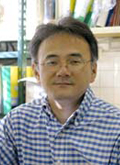Team Introduction
Team Introduction
Our team consists of members from the Faculty of Science and Engineering. We study wetlands under a broad definition (including both rivers and wetlands) which are considered to be in danger today. We believe various countermeasures could be prepared to alleviate the crisis by scientifically clarifying the problem. Eventually, for the purpose of environmental conservation, we will try to propose guidelines for river management and environmental restoration using microorganisms and plants as indicators (including chemical data).In addition to the survey sites as shown below, we also conduct research in parallel with the development of on-site bacteria detection technology, and the exploratory research on natural organic compounds derived from aquatic plants found in wetlands.

Soil Microbial Analysis

Evaluation of Contribution to Plant Purification

Environmental Dynamic Analysis

Evaluation of Contribution to Plant Purification

Microbial Quantitative Analysis

Natural Product Chemistry

Intelligent Informatics
The Watarase Retarding Basin has long suffered from pollution from the Ashio Copper Mine. At this survey site, we conduct research into phytoremediation, which would use plants to repair the polluted soil. In particular we are analyzing the changes in soil microorganisms and the relationship between water quality and microorganisms focusing on the chemical data and plant reactions.
VIEW MORESarobetsu Wetland, the largest high moor in Japan, has been affected by peat mining for many years. At this survey site there are still some areas where vegetation has not yet recovered and we have been trying to clarify the role played by microorganisms in the recovery of vegetation. Additionally, vegetation recovery requires the sphagnum to form a thick layer. Therefore, we have been conducting comparative studies of gene and enzyme activities to investigate the condition of sphagnum moss in the rehabilitation area after mining.
VIEW MOREIn Tokyo, there are many playgrounds located along the Tama riverbanks that are popular with local residents. To ensure safe and secure living for the surrounding residents, analysis of microorganisms existing in complex systems was considered essential. Hence, we have not only been carrying out chemical analysis for river management, but also analyzing the microorganisms from upstream to downstream. We have been trying to conduct data modelling of river microbes and environmental data based on those analyses.
We have been concurrently developing on-site bacteria detection technology and conducting exploratory research on natural organic compounds derived from aquatic plants found in wetlands.